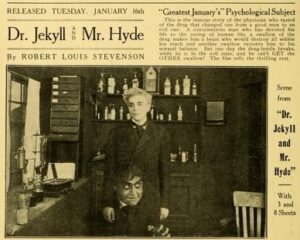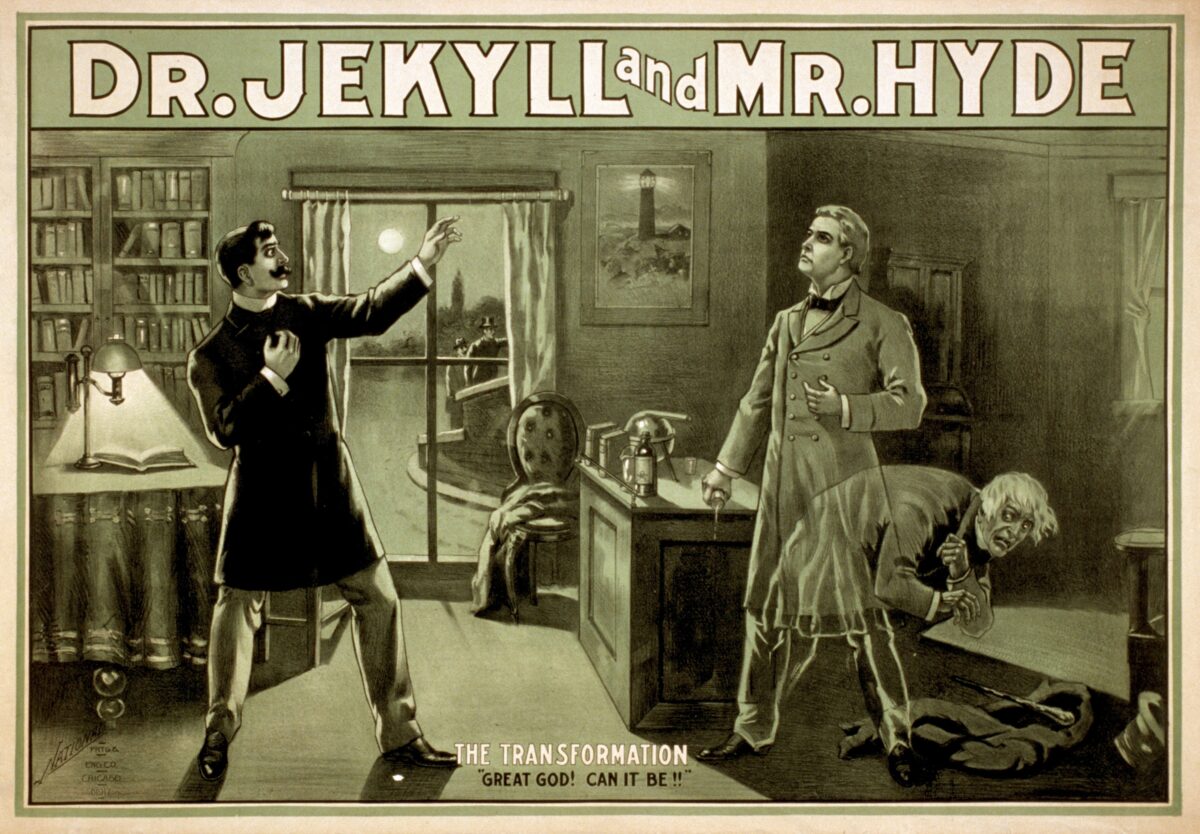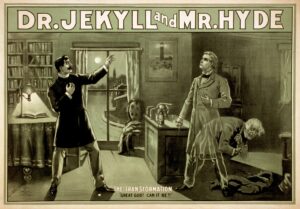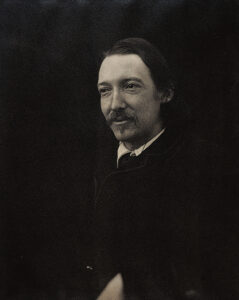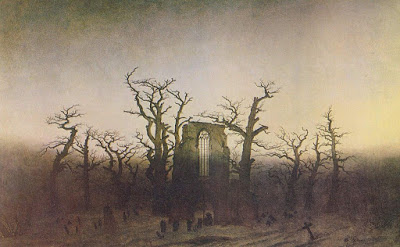Julia Kristeva’s essay is on the concept of abjection. Abjection means where a person or society casts off an entity or set of entities that it wishes to place outside of the self. The individual or society places it “beyond the scope of the possible the tolerable the thinkable (1). the abject has “only one quality of the object that of being opposed to I.” There are various types of abjection. Kristeva says “food loathing is perhaps the most elementary and most archaic form of abjection.” The ego of the individual expels things which are disgusting away from the self.
We are all born unable to distinguish between ourselves and the outside world. We look at ourselves as being one with our mothers. To establish the self, we need to have some way of distinguishing ourselves from our mother. We form our ego by a series of abjections from things in the world. One of the things we need to expel from ourselves is the idea of death. Corpses are thrust aside by the psyche as something repulsive. When you see something dead, you don’t just understand it as a rational thing, but rather it is something you drive out of your psyche. The confrontation with the corpse is a form of abjection. The corpse represents more than just a rational idea of death. It is something that is thrust out of the psyche.
Kristeva holds that when a person expels something from their consciousness, they put in a realm beyond meaning. Abjection functions in a realm where meaning collapses. It is not just that a person doesn’t think about the abject object. They put it into a realm that is beyond symbolic meaning. There are certain concepts in language that are based on subject and object. In abjection, the distinction between subject and object is lost.
In “Never Let Me Go”, Ishiguro paints a picture of a society that creates clones solely for the purpose of using their body parts to fix people as they get older. These clones are called donors because their sole purpose is the harvesting of their body parts. These clones are looked at as being without souls. As the novel says, “and none of you will be working in supermarkets as I heard you planning the other day. Your lives are set out for you. You’ll become adults, then before you’re old, before you are even middle aged, you will start to donate your vital organs (81). That’s what each of you was created to do.” The clones are looked at as being subhuman. They are the Other. This is a form of abjection for the society at large because the clones have no other purpose than to become donors for the “regular people.”
The clones go to a special school called Hailsham. They are separated from the rest of society. There is a parallel between the clones and how outcast people are looked at in society today. Unfortunate people are not looked at just as people who are less fortunate than the people in regular society. They are looked at as being subhuman. This is in line with Kristeva’s idea that abjection is not just a rational evaluation. It is a type of expelling something from the human ego which is the sense of self.
Both Frankenstein and “Never Let Me Go” have themes of abjection. In Frankenstein, the monster is an outcast because of his grotesque physique. In Never Let Me Go, although the clones are not ostracized because of their physical appearance, they are still considered outcasts because of their position in society. They are only considered to be useful for harvesting their organs. They are not considered to have a soul. Although both were created by man to mimic human beings, they were treated with such animosity and repulsion.
However, Hailsham is not just a storehouse to store clones in. It is a special program that tries to enrich the lives of the clones. The program there tries to locate the humanity in the clones. There is an effort to inspire creativity in the clones. For example, the clones produce art work that is later sold at exhibitions. The art work is inspected to try to see if the clones love some particular person. This was important because the experience of love is a sign of their humanity.
The question is if the society doesn’t value the clones as humans, why does it try to find humanity in the clones? It seems that Ishiguro was trying to portray the ambivalent feelings that the society had about the clones. On the one hand, if society denies the humanity of the clones, then it denies its own humanity. On the other hand, society needs to deny the reality of death and continue to use the clones for body parts. This creates a conflict for the human ego. In psychology, there is a concept called cognitive dissonance. The human mind cannot tolerate contradictions in the way it conceptualizes things. It must adjust its concepts to be harmonious with one another. So, society needed to experiment with whether or not the clones possess humanity, but it came out with the conclusion that they really were not human.
Another question is why the clones accepted their fate so readily that they were going to die from the donations. It is true that they were excited about the possibility of deferral but, for some reason, they didn’t protest their fate to die for organ harvest. It seems to be that Ishiguro uses this story as a metaphor as a way to portray the inevitability of society’s attitude. In other words, in order for society to live, they have to consider the clones to be subhuman otherwise society would fall apart. This is symbolized by the strange acceptance on the part of the clones that they are only valuable for the harvesting of their organs.
To conclude, we see that Ishiguro’s “Never Let Me Go” portrays the concept of abjection throughout his book. The book is about the ambivalence that society feels for the other and the outcast. There are two types of abjection that are contained in Ishiguro’s work. There is the social abjection of the outcast in society and also there is the abjection of death. Society needs to have outcast members to build its ego. Also, the clones are looked at as being something like the walking dead because people are repulsed by them. As Kathy says “Madame never liked us. She’s always been afraid of us. In the way people are afraid of spiders and things” (268).
Discussion Questions
1.Do you think the clones are human?
2.Why did the donors have to die to fulfill their job description? Why couldn’t they donate some of their organs which would allow for their survival?
3.Why is the book called “Never Let Me Go”?
Works Cited
Ishiguro, Kazuo. Never Let Me Go. New York: Alfred A. Knopf, 2005. Print.
Kristeva, Julia, and Leon S. Roudiez. Powers of Horror: An Essay on Abjection. New York: Columbia University Press, 1982. Print.
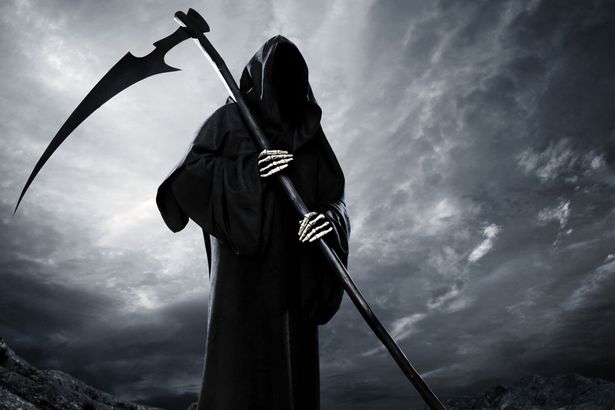

 The excerpt from the book ‘Dark Ecology’ by Timothy Morton is a complex, philosophical, often confusing piece about ecological awareness. It is anything but your cookie-cutter environmental diatribe about the evils of capitalism causing global warming. While capitalism doesn’t get away scot-free, he sees it as more of a symptom than the root cause. He contends that if capitalism were the cause, “then Soviet and Chinese carbon emissions would have added nothing to global warming”. The root cause is that humans consider nature a separate entity, as something that can be managed. This “command and control” approach, as he puts it, can be traced back to the origins of agriculture.
The excerpt from the book ‘Dark Ecology’ by Timothy Morton is a complex, philosophical, often confusing piece about ecological awareness. It is anything but your cookie-cutter environmental diatribe about the evils of capitalism causing global warming. While capitalism doesn’t get away scot-free, he sees it as more of a symptom than the root cause. He contends that if capitalism were the cause, “then Soviet and Chinese carbon emissions would have added nothing to global warming”. The root cause is that humans consider nature a separate entity, as something that can be managed. This “command and control” approach, as he puts it, can be traced back to the origins of agriculture.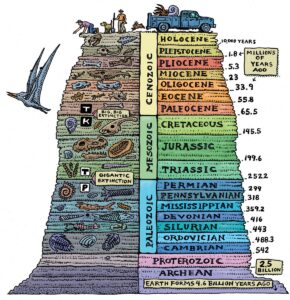
 Morton claims that we Mesopotamians are both the detective and the criminal. He compares ecological awareness to noir, a genre of fiction where the protagonist or narrator is also the perpetrator. Margaret Atwood’s novel also warns us about the dangers of humans believing they exist separate from nature. In ‘Oryx and Crake’, the story was narrated through the thoughts of Snowman, the last person presumed to be alive in a world decimated by both climate change and a virus created by an out-of-control corporation. He is also someone who was unwittingly complicit in both releasing the virus and participating in a society that allowed these destructive corporations to thrive.
Morton claims that we Mesopotamians are both the detective and the criminal. He compares ecological awareness to noir, a genre of fiction where the protagonist or narrator is also the perpetrator. Margaret Atwood’s novel also warns us about the dangers of humans believing they exist separate from nature. In ‘Oryx and Crake’, the story was narrated through the thoughts of Snowman, the last person presumed to be alive in a world decimated by both climate change and a virus created by an out-of-control corporation. He is also someone who was unwittingly complicit in both releasing the virus and participating in a society that allowed these destructive corporations to thrive. Every country has an empowered board that Oversees this. Like in the United States, the
Every country has an empowered board that Oversees this. Like in the United States, the Instead of going back or slowly withdrawing from public disclosure, it would be better to continue with the success of the TRI program. This exposure approach applies to not only to the conservative economist who very well believe that the toxic information that has been disclosed can help promote consumer or citizens as a whole, empowerment and as well encourage firms to reduce harmful activities. Adhering to these instructions by the TRI and EPA comes from the ill-desire to be viewed as a negative company by targeted consumers or citizens (in other words, to avoid a negative public view), including reducing the trust of the people on the company. TRI is cost effective. They impose a minor cost on industries so that they adhere to the program. They do not determine how the companies minimize cost but as long as they do not release excess toxic chemicals, they are good. TRI promotes democratic decisions by helping citizens to be more aware on their stand with regulated entities. EPI on the other hand spends less budget implementing their programs. Both arms have the same aims and are very effective in carrying out their work. This country is ours, we should try to do our best to make the country better for us. For one it is not better when too much toxic chemicals are released to the environment.
Instead of going back or slowly withdrawing from public disclosure, it would be better to continue with the success of the TRI program. This exposure approach applies to not only to the conservative economist who very well believe that the toxic information that has been disclosed can help promote consumer or citizens as a whole, empowerment and as well encourage firms to reduce harmful activities. Adhering to these instructions by the TRI and EPA comes from the ill-desire to be viewed as a negative company by targeted consumers or citizens (in other words, to avoid a negative public view), including reducing the trust of the people on the company. TRI is cost effective. They impose a minor cost on industries so that they adhere to the program. They do not determine how the companies minimize cost but as long as they do not release excess toxic chemicals, they are good. TRI promotes democratic decisions by helping citizens to be more aware on their stand with regulated entities. EPI on the other hand spends less budget implementing their programs. Both arms have the same aims and are very effective in carrying out their work. This country is ours, we should try to do our best to make the country better for us. For one it is not better when too much toxic chemicals are released to the environment.

